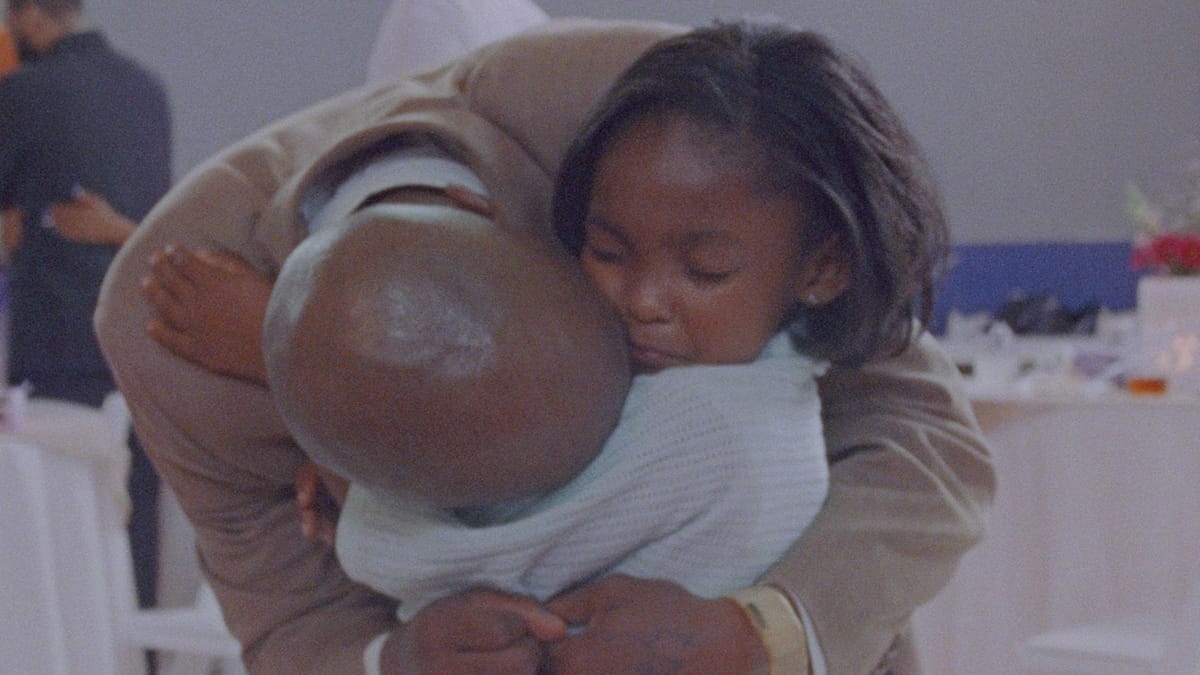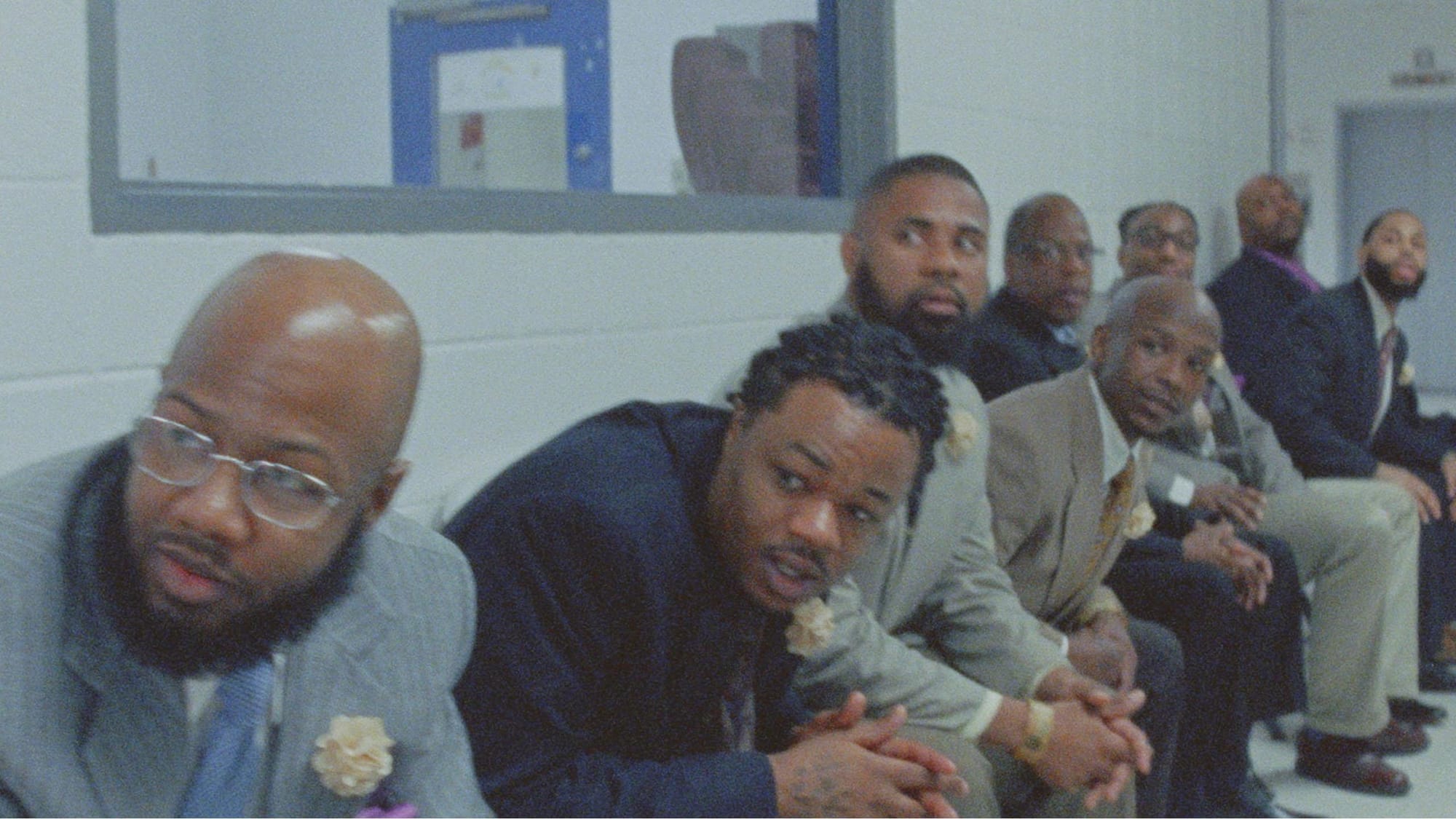What to Watch: "Daughters"
An emotional powerhouse about a father-daughter dance in prison, Angela Patton and Natalie Rae's documentary is one of the year's finest.

(Note: Paying subscribers can read this week's Washington Post reviews for "Blink Twice" and "Between the Temples" below the paywall.)
If you don’t get verklempt watching “Daughters” (⭐ ⭐ ⭐ 1/2, streaming on Netflix), you’re missing some functional part of your humanity. The documentary by Angela Patton and Natalie Rae – winner of both the documentary audience award and the “Festival Favorite” prize at Sundance 2024 – is about a father-daughter dance at a Washington D.C. prison, with much of the focus on the lead-up and aftermath and particular attention paid to four of the prisoners and their daughters. The program, started in 2007 by co-director Patton, is a success: 95% of the men who participate and have been paroled have never returned to prison. In the group sessions that take place during the weeks leading up to the dance, the gifted life coach Chad Morris helps the men tease out their regrets and hopes; these scenes are incredibly moving in their vulnerability and enraging in the glimpses they provide of America’s for-profit carceral system. (In-person visits between prisoners and their families have been discontinued at many US prisons since 2014, replaced by a video conferencing system for which the families have to pay.)
The sequences outside the prison walls, of the daughters and their mothers, are equally emotional, with a wide range of feeling shown by the girls. The unofficial star of “Daughters” is five-year-old Aubrey Smith, a saucer-eyed chatterbox who likes to show off her multiplication skills and is counting down the seven years until her father, Keith, is released. By contrast, 10-year-old Santana is stone-faced and bitter about her father Mark’s absence, which has left her to care for two younger siblings and a mother with emotional problems; she vows she’ll never have children of her own. Ja’Ana, 11, worries because her dad, Frank, is a stranger whose face she no longer remembers. The oldest, Raziah, 15, lives with her feelings close to the surface; a mere mention of her father, Alonzo, brings a waterfall of tears.

If the group therapy scenes are moving, the dance itself is a stone killer, a full-on daddy-daughter prom with the men trading orange jumpsuits for suits and ties – suddenly their individuality is confirmed – and the girls arriving in princess tutus and evening gowns. The tenderness of the moment is overwhelming, and so is the sense that the fathers are looking to the daughters to help them express their feelings – to say “I love you” – rather than the other way around.
“Daughters” checks in on its subjects a year and then three years after the dance, charting moments of grace and uncertainty. The power of the event itself has been obvious to all: “That’s the day I actually felt like I can’t come back to prison no more,” says one of the fathers, who figures he had spent six months of his adult life a free man before then but hasn’t been rearrested since. Reunited with her dad Mark, Santana has emerged from her shell of misery, but at 8 the once open-hearted Aubrey has started to close herself off from the father she won’t see until she’s 16. She’s become Santana, in essence, and one prays she’ll come out the other end of the tunnel.
Stylistically, “Daughters” gives itself over to impressionistic images and poetic transitions, some of which work and some of which feel forced. The directors avoid polemics, though, and the keepers of the penal system – guards, wardens, and so on – remain offscreen and unreferenced, as do the crimes for which the men are serving time. The movie implies that whatever they’ve done, they’ve paid for it in the wreckage of their children’s lives and their determination to repair the damage. Similarly, the racial inequities of American culture and the cruelties of the carceral state are never directly addressed in “Daughters.” They don’t need to be. It’s all right there in the faces of a father and his child seeing each other – really seeing – for the first time.
Some quick hits on other films, new and old, arriving on demand:
“Logan Lucky” (⭐ ⭐ ⭐, 2017. streaming on Netflix; for rent on Amazon, Apple TV) – Steven Soderbergh and a great, game cast in a heist comedy set at a NASCAR racetrack. Amiably silly, a case of talented people allowing themselves to goof around and have fun. Channing Tatum and Adam Driver play brothers, and Daniel Craig test-drives his Southern-fried accent in the ”Knives Out” movies as a prison escapee.
“Serenity” (⭐ ⭐, 2019, streaming on Amazon Prime Video) Hardly a good movie, but so bizarre in concept and execution that it becomes a guilty pleasure that’s guiltier than most. Matthew McConaughey stars as a burned-out charter boat fisherman with a hot ex-wife (Anne Hathaway) who wants him to deep-six her abusive new husband. What starts as a camp remake of “Body Heat” gets stranger and stranger until we're pitched one of the most ridiculous curve balls in recent cinema. I’m still a little cheesed that no one noticed when I gave away the game in my Boston Globe review. (Read the first letter of each paragraph in order.) Bonus: A preview trailer that makes no sense whatsoever.
“Much Ado About Nothing” (2013, ⭐ ⭐ ⭐, streaming on Amazon Prime Video and The Criterion Channel) – Movie Shakespeare is hit and miss, and modern-dress Shakespeare even more so, but Joss Whedon’s weekend-party staging of the Bard’s most heartsore comedy – literally; it was filmed at the director’s Hollywood home – works beautifully because the assembled company understands how closely the play skirts loneliness and pain. Alexis Denisof and the sublime Amy Acker are wonderful as Benedick and Beatrice, two aching smartypants who can’t admit they adore each other.
“National Anthem” (⭐ ⭐ ⭐, 2024, for rent on Amazon and Apple TV) – Luke Gilford’s gentle coming-of-age story about a rawboned and lonely young man in Arizona (Charlie Plummer) who finds his people among the denizens of a queer rodeo. The movie’s at its openhearted and sensuous best when observing an alternate vision of the American West that’s no less possible for being radical and no less radical for being possible. (My review for the Washington Post is here.)
“Evil Does Not Exist” (⭐ ⭐ ⭐ 1/2, 2024, for rent on Amazon and Apple TV) – A rich, subtle, and challenging experience from Japan’s Ryūsuke Hamaguchi (Oscar-winner “Drive My Car”) charting the collision between a self-styled “man of the woods” and two citified PR representatives for a proposed glamping site. Elements of comedy and drama intertwine and lead to an ending you’ll be arguing about and haunted by for quite some time. (My review for the Washington Post is here.)
“Once Upon a Time in the West” (⭐ ⭐ ⭐ 1/2, 1966, streaming on Paramount+; for rent on Amazon and Apple TV) – Director Sergio Leone followed up “The Good, the Bad & the Ugly” with this even more sprawling epic, perhaps the closest the spaghetti western ever came to pure pop art. Worth seeing for the monolithic opening shoot-out and for Henry Fonda in a rare villainous role as a hired killer with a sadistic streak. Also worth watching on the largest TV in your house.
Enjoy your weekend, and feel free to leave a comment or add to someone else's.
If you enjoyed this post, please forward it to friends! And if you’re not a paying subscriber and would like to sign up for additional postings and to join the discussions — or just help underwrite this enterprise, for which the author would be very grateful — here’s how.





